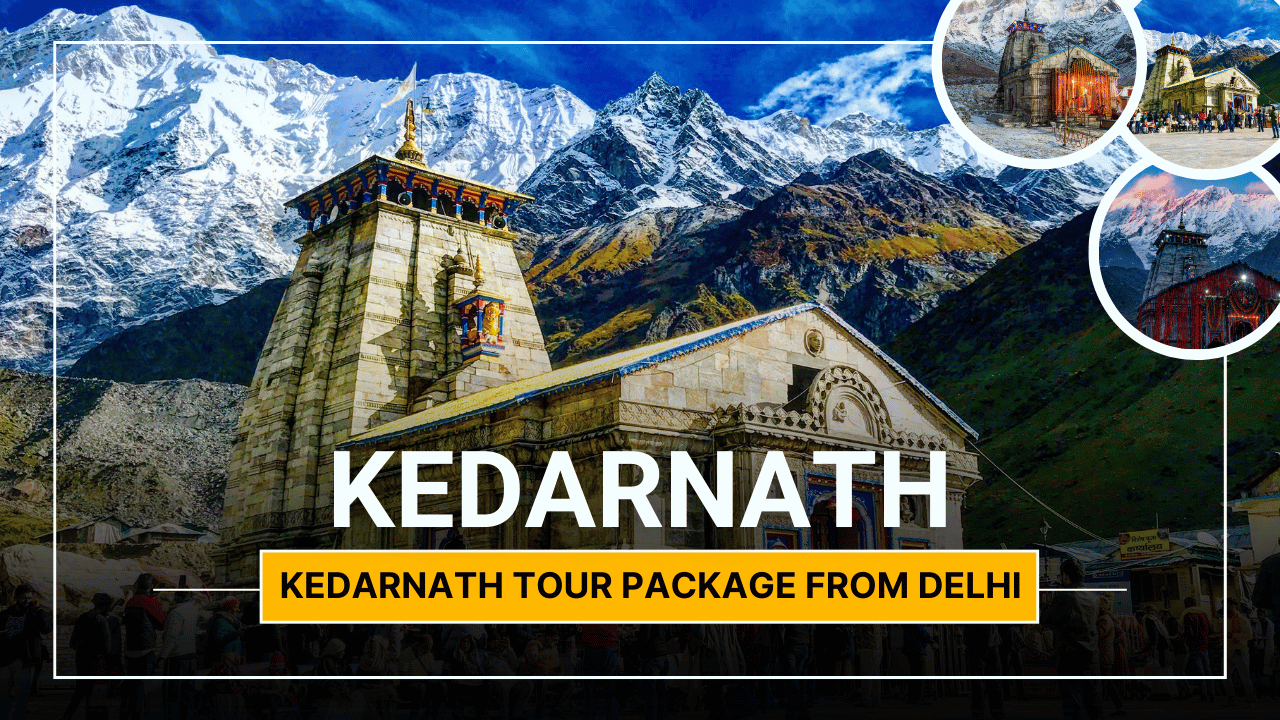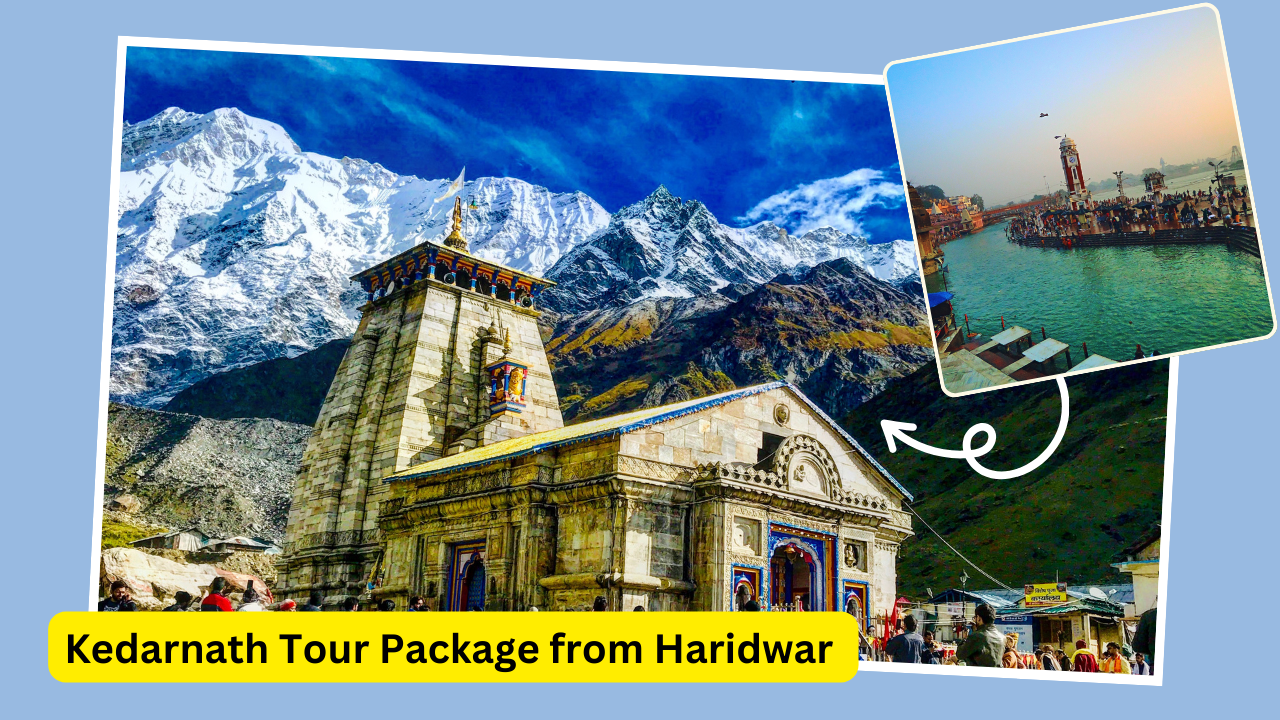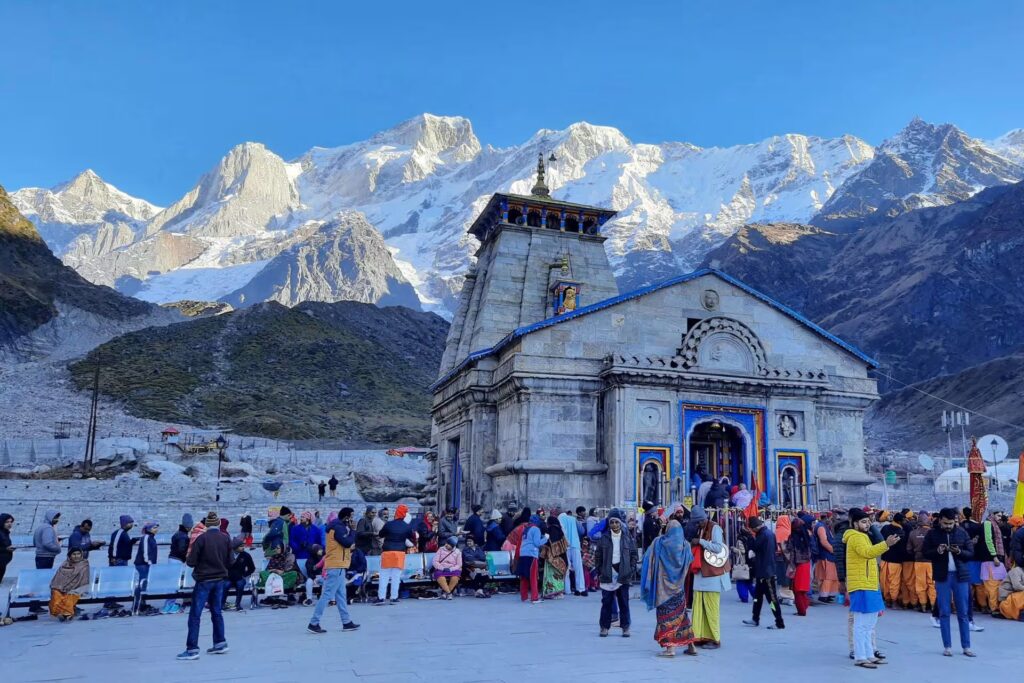Kedarnath Yatra
One Step Closer To Spirituality
Submit the form and get your personalized quote now!
Kedarnath Dham is a Shiva teerth in the Rudraprayag district of Uttarakhand, located at 3584 metres altitude. Along with being one of the 12 Jyotirlinga, Kedarnath is also part of the Chota Char Dham circuit. Compared to the other three sites of this circuit, this teerth is settled in the more interior region of Garhwal. The last town before the trek starts is Gaurikund.
Because of the Himalayan topography, the wide roads don’t connect Kedarnath Dham with Gaurikund. So pilgrims trek 15 kilometres to reach the temple. On the north of the main temple, the Chorabari Glacier is located, and the Vasuki Tal is on its western side.
Besides this, there are some small religious points around the temple, like Adi Shankaracharya Samadhi, Bheem Shila, Retas Kund, and Bhairavnath Temple. Kedarnath Yatra is not only a religious trip; rather, it is a way to feel peace and understand God’s presence in depth. If you want to know other important details about Kedarnath Yatra, please read this complete article.
Kedarnath Opening and Closing Dates 2025
Opening and Closing Date and Time of Kedarnath in 2025
Opening Date of Temple: 2nd May 2025
Closing Date of Temple: 23rd October 2025
Opening Time of Temple: 4:00 am
Closing Time of Temple: 7:00 pm
Morning Darshan Timing: 7:00 am – 3:00 pm
Evening Darshan Timing: 5:00 pm – 7:00 pm
The opening ceremony of Kedarnath will take place on the day of Akshaya Tritiya. The doors of the temple open with the sound of bells, Vedic Mantras and fragrance of flowers for the devotees after long closure during winter. If you are planning to witness Kedarnath this year, follow the information provided above to schedule your trip plan.
Stay Options in Kedarnath
Kedarnath Dham is located at a high altitude, so there are comparatively less options to stay. Besides Kedarnath, pilgrims consider other nearby places like Gaurikund, Guptkashi and Sonprayag to stay and relax. Near the temple, there are some lodges, rest houses and guest houses that offer accommodation services.
Most of these are 3-star hotels. The price range varies between INR 1000 to 3000. To stay in a more budget-friendly manner, you can go for the triple occupancy room. Besides the hotels, there are several campsites in the surroundings, so you can choose to stay there as well. In camps, you get an adventurous way to live and it feels more joyful.
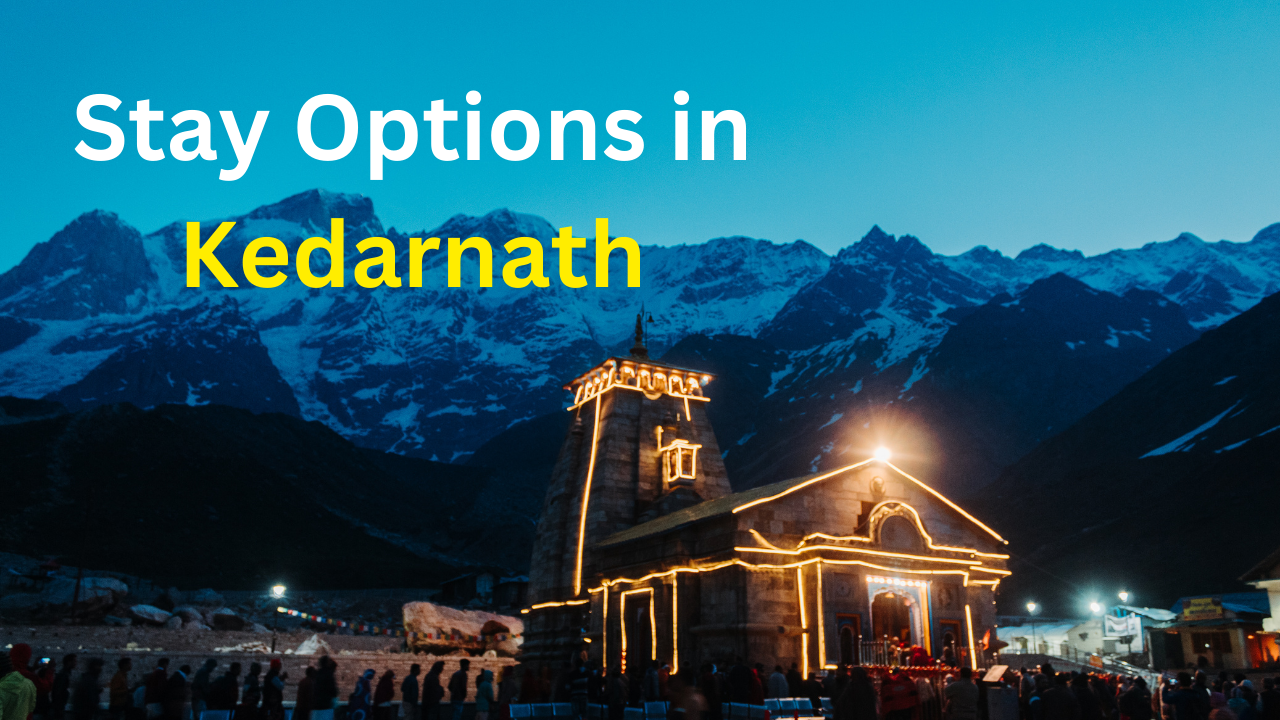

Food Options in Kedarnath
When you go on the journey you want everything to be special so that the overall experience of Yatra can be fulfilling. So here is the food guide for the Kedarnath Yatra. In Kedarnath town, there are several small restaurants offering normal North Indian food like Roti, Dal Fry, Rice, Paneer, Rajma, Parathe, Chhole, etc.
The price of a normal North Indian Thali is usually around Rs. 200-300. If you are a south Indian visiting the Kedarnath, then also you can get enough options to eat. Generally, the restaurants offer Plain and Masala Dosa, Idli, Vada, Rasam and Uttpam. The price of each of the cuisines is under Rs.300.
For your caffeine requirements, there is availability of tea and coffee at INR 25-50. Usually, people like to sip hot drinks here because it helps to tolerate the low temperature. Overall, you will get decent, clean, fresh and hot food to eat and enjoy.
Nearby Treks & Attractions
To add more surprises, and more experiences and enjoy more, you should look for the other nearby treks. It is not possible to come to high altitude every 2 months. So when you come to Kedarnath Yatra, then visit at least 4 to 5 popular sites of the nearby region. From that perspective, here are some treks on which you can go and double your enjoyment.
- Kedarkantha Trek
- Yamunotri Trek
- Tungnath Trek
- Vasuki Tal Trek
- Chorabari Tal Trek
- Roopkund Trek
- Chandrashila Trek
- Gopeshwar
- Sonprayag
- Chopta
- Auli
- Devprayag
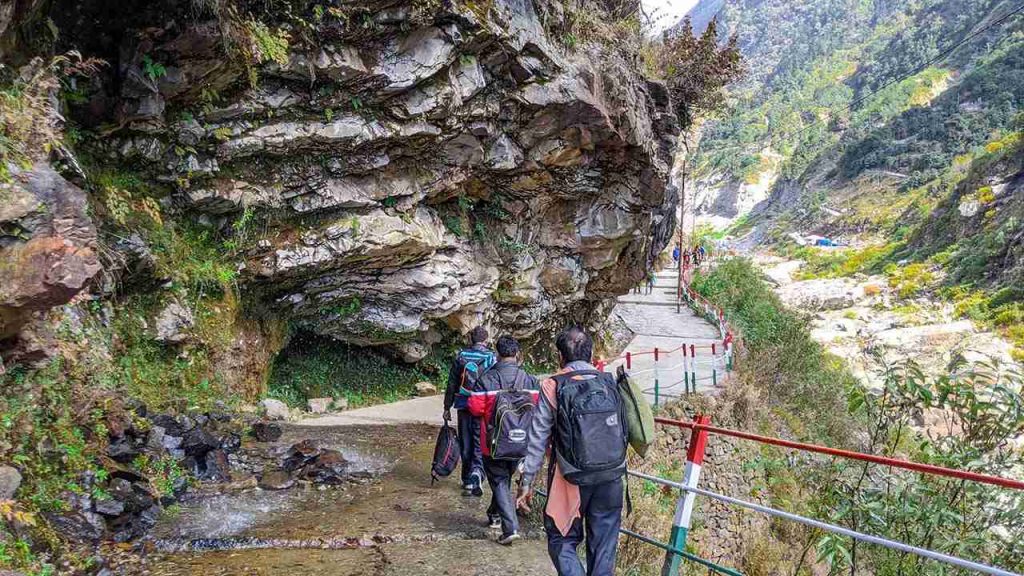
Exclusive Char Dham Packages Await – Reserve Yours Today!
Ways to Reach Kedarnath
This is also one of the stresses people take before going on Kedarnath Yatra. Let us tell you that you can reach there by a variety of modes. It basically depends on the amount you wanna spend to get there.
Less Expensive Method: By spending less money, you can reach the Kedarnath Dham. For that, first, you have to come to Haridwar by train and then book a taxi to reach Sonprayag. From that point, you should trek and, if needed, then take the help of porters. By this method, you can really save money and reach the temple easily.
Expensive and Luxurious Method: If you are someone who doesn’t think much while investing money in travelling. Then this method to reach Kedarnath is for you. For this, you have to book the flight tickets from your city to Dehradun. And for the journey beyond, you should book a helicopter package. Under this, you will reach and get Darshan of Kedarnath Dham in one day only. This is the most time-efficient method that you will have to cover Kedarnath Darshan.
What should you carry in Kedarnath Dham Yatra
Here is a list of some essential items that you need to carry:
- You have to carry proper Thermal attire to cover your body. Like inner wear (warm camisole and pyjama), jacket, sweaters, Gloves for hand, Cap and muffler to cover the ears, and Socks to keep your feet warm. You should take extra care if You have a small kid with you. And avoid going to this high altitude location, if you have an infant.
- Sometimes, it becomes slippery due to continuous rain. That is why you need trekking-waterproof shoes that have a good grip. Besides this, quick dry clothes can also help as they dry quickly after getting wet.
- Some people are allergic to high-altitude plants. So, they should pack their basic first-aid. Pain relievers, band-aids, personal medicine, electrolyte Powders for hydration and energy bars for maintaining energy levels are a must.
- You can take any religious book to read, Rudraksha Mala to chant and Ganga Jal. You should buy flowers from there only.
Bring your Aadhaar Card, passport and all proof of identity with you. There are no cash points during the Trek, so carry as much cash as you need. Though the shops are present they receive online payments also. - You should carry your charger. Due to massive rain, the electricity is not always on, so it is safe to keep your power bank fully charged.
- Due to hilly areas, it is important to carry a fully charged flashlight in the dark and a walking stick. If you want to capture the elegant view of the Peaks then take the camera also.
Things to do in Kedarnath
Some activities that you should do in this journey of Kedarnath.
- Trekking
- Attending Temple Arti
- Photography of Himalayas Peaks
- Visualizing the Sunrise, Sunset
- Sightseeing
History of Kedarnath:
We find the references for the backstory of the Kedarnath shrine in various religious texts and scriptures. Skanda Purana profoundly describes its importance in each aspect. It suggests the temple is the same place where Lord Shiva released the holy water of Goddess Ganga from his deadlocks into the earth.
The other story dates back to the times of the Mahabharata War. A king called Pandu had five sons who were collectively called Pandavas. The five Pandavas were in battle with their cousins, brothers, and other relatives. They marked their victory. But they were restless with the blame for committing war consequences.
It was necessary to wash away the sins to attain salvation in the aftermath of life. To seek forgiveness, they left their royal palaces in search of Lord Shiva. Lord Shiva being upset with their deeds in the war, wanted to avoid them. And so he went underground. After a certain time, he reappeared as a bull’s hump in the Kedarnath. The temple is built there in that exact place. And it was revived by the great philosopher, Adi Shankaracharya ji around the 8th Century.
Limited-Time Deals on Char Dham Yatra! Book Now!
Flood in Kedarnath Update
Through Various sources, recent floods, avalanches and cloud bursting in Kedarnath are continuously broadcasted. On 30th June 2024, the avalanche was said to have occurred in the Chorabari Glacier which is located in the upper region of Kedarnath town and is hardly 4 km above the main temple.
Due to heavy rainfalls on 31st July, the trekking routes to Kedarnath were blocked by huge rocks. The pathway of the Bhimbali, which starts from Gaurikund and leads to Kedarnath temple, was also flooded away. The flood even resulted in landslides in the various parts of Rudraprayag district and many casualties were recorded.
Consequently, the yatra to Kedarnath Dham has been suspended by the government given the same weathering conditions hovering in its vicinity. However, everything is under control now, and the rescue team is still working hard to save as many lives as possible. The government is also providing funds to the local public who are in need.
Kedarnath Flood 2013
Similar to this in 2024, a natural phenomenon took place in 2013 as well.
The cyclonic imbalance and a cloud-burst caused the area to receive heavy rainfall that later led to floods and landslides on 16th June. It started as a normal rain but later took the form of an immense watershed. The routes of the districts of Rudraprayag, Pithoragarh, Chamoli, Uttarkashi and Tehri were partially damaged by the floods and the yatra to Kedarnath Dham was suspended.
On the 17th of June a second cloud burst and resulted in the loss of the trekking routes leading to the Kedarnath. All the structures were completely shattered and no routes remained intact to reach the temple because of the gushing flow of the water. All the Roads were blocked, and people were not able to survive with the little resources remaining until the relief and rescue operating team reached the survivors and provided much help and assistance to them.
Over the decades, the routes and roads were constructed once again as the government took responsibility. The life was once again back to as it was, happier, pleasant and rich with its natural beauty. All the infrastructures were rebuilt and tourism started soon as well.
The other trekking route to Kedarnath shrine was created, covering the area of the left bank of the Mandakini river, which was connected to the Rambara village through a bridge. Moreover, accommodations and other facilities were established in the base camps.
Precautions One Should Consider in Kedarnath Yatra
The Kedarnath Dham, which is on the wishlist of many, is known as one of the Char Dhams of Uttarakhand. It is settled in the Rudraprayag district.
- This region reportedly receives great rainfall in the monsoon season. So, there are some precautions that one must consider while planning for it.
- The roads get slippery in the monsoon, so please ensure that you wear comfortable rainy shoes with good grip.
- Always pack an extra pair of footwear and carry rain gear with you in case you meet with a sudden emergency.
- Prior checking of weather forecasts is highly recommended. And avoid visiting the temple, if the upcoming days are going to be rainy.
- Risks are involved during monsoon season, so better prepare your itinerary with wisdom.

